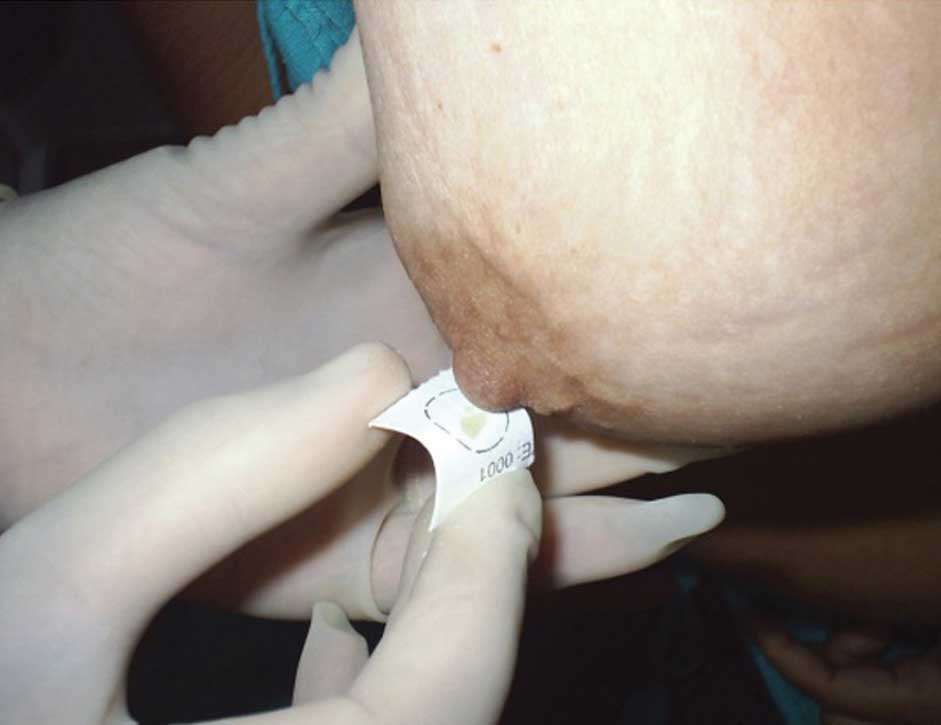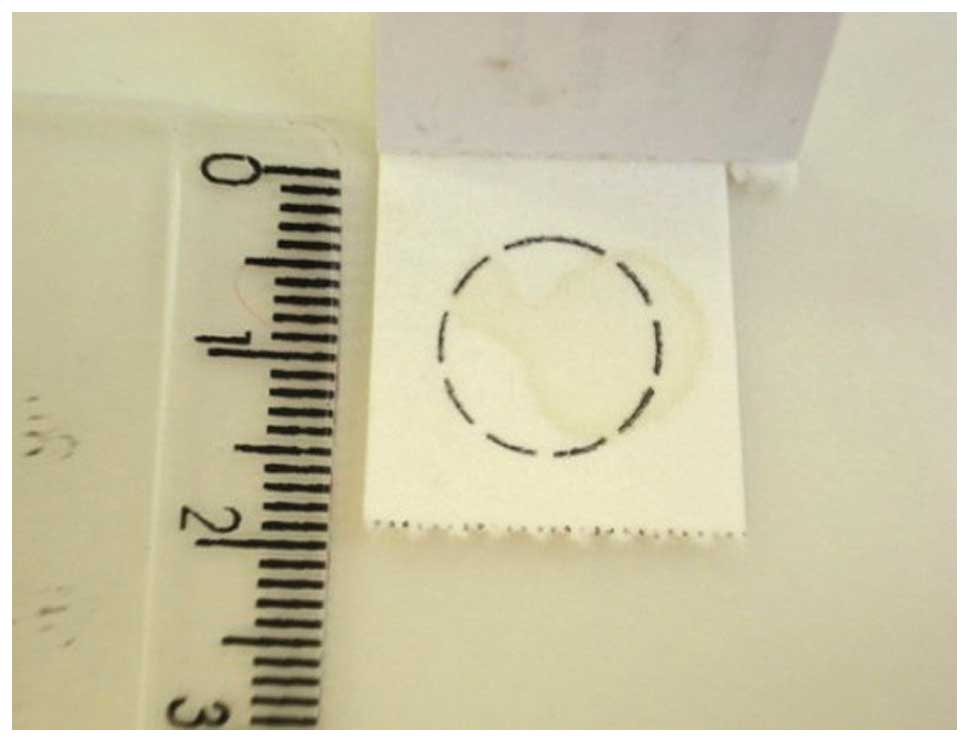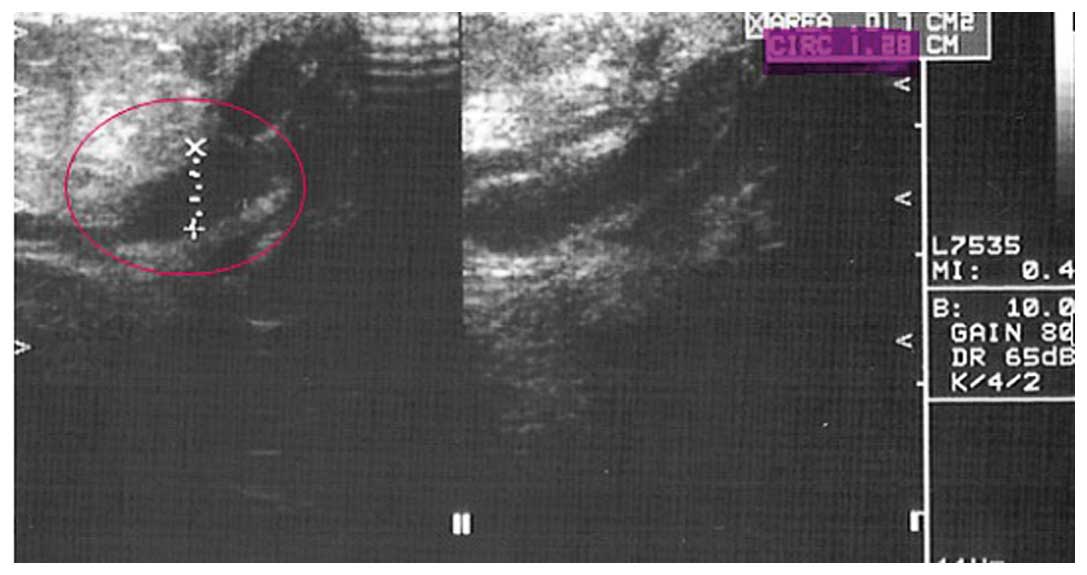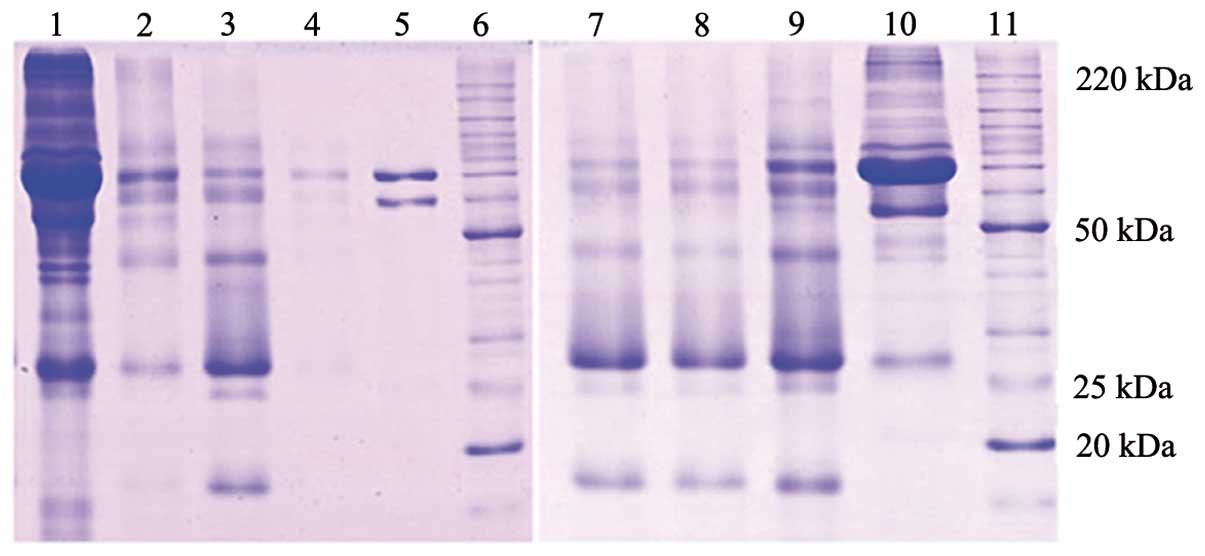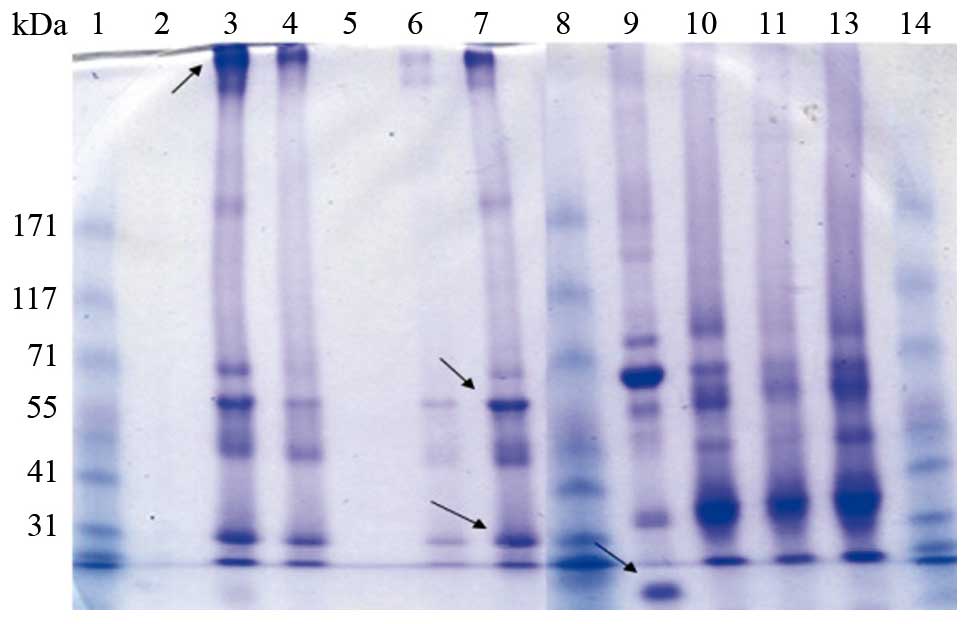|
1
|
West KE, Wojcik EM, Dougherty TA, et al:
Correlation of nipple aspiration and ductal lavage cytology with
histopathologic findings for patients before scheduled breast
biopsy examination. Am J Surg. 191:57–60. 2006. View Article : Google Scholar : PubMed/NCBI
|
|
2
|
Alexander H, Stegner AL, Wagner-Mann C, et
al: Proteomic analysis to identify breast cancer biomarkers in
nipple aspirate fluid. Clin Cancer Res. 10:7500–7510. 2004.
View Article : Google Scholar : PubMed/NCBI
|
|
3
|
Balci FL and Feldman SM: Exploring breast
with therapeutic ductoscopy. Gland Surg. 3:136–141. 2014.PubMed/NCBI
|
|
4
|
Liedke PE, Finkelstein DM, Szymonifka J,
et al: Outcomes of breast cancer in Brazil related to health care
coverage: a retrospective cohort study. Cancer Epidemiol Biomarkers
Prev. 23:126–133. 2014. View Article : Google Scholar
|
|
5
|
Lang JE and Kuerer HM: Breast ductal
secretions: clinical features, potential uses, and possible
applications. Cancer Control. 14:350–359. 2007.PubMed/NCBI
|
|
6
|
Hirose M, Nobusawa H and Gokan T: MR
ductography: comparison with conventional ductography as a
diagnostic method in patients with nipple discharge. Radiographics.
27:S183–S196. 2007. View Article : Google Scholar
|
|
7
|
Guthrie R and Susi A: A simple
phenylalanine method for detecting phenylketonuria in large
populations of newborn infants. Pediatrics. 32:338–343.
1963.PubMed/NCBI
|
|
8
|
Borte S, Janzi M, Pan-Hammarström Q, et
al: Placental transfer of maternally-derived IgA precludes the use
of guthrie card eluates as a screening tool for primary
immunodeficiency diseases. PLoS One. 7:e434192012. View Article : Google Scholar : PubMed/NCBI
|
|
9
|
van Ommen CC, Elvers LH, Notermans DW, et
al: Antibody levels against B. pertussis in neonates measured in
dried blood spots. Vaccine. 30:2697–2700. 2012. View Article : Google Scholar : PubMed/NCBI
|
|
10
|
Smith PK, Krohn RI, Hermanson GT, Mallia
AK, Gartner FH, Provenzano MD, et al: Measurement of protein using
bicinchoninic acid. Anal Biochem. 150:76–85. 1985. View Article : Google Scholar : PubMed/NCBI
|
|
11
|
Manello F, Medda V and Tonti GA: Protein
profile analysis of the breast microenvironment to differentiate
healthy women from breast cancer patients. Expert Rev Proteomics.
43:43–60. 2009. View Article : Google Scholar
|
|
12
|
Shevchenko A, Wilm M, Vorm O, et al: Mass
spectrometric sequencing of proteins silver-stained polyacrylamide
gels. Anal Chem. 68:850–858. 1996. View Article : Google Scholar : PubMed/NCBI
|
|
13
|
Varnum SM, Covington CC, Woodbury RL, et
al: Proteomic characterization of nipple aspirate fluid:
identification of potential biomarkers of breast cancer. Breast
Cancer Res Treat. 80:87–97. 2003. View Article : Google Scholar : PubMed/NCBI
|
|
14
|
Sartorius OW, Smith HS, Morris P, et al:
Cytologic evaluation of breast fluid in the detection of breast
disease. J Natl Cancer Inst. 59:1073–1080. 1977.PubMed/NCBI
|
|
15
|
Manello F, Tonti GA and Papa S: Human
gross cyst breast disease and cystic fluid: bio-molecular,
morphological, and clinical studies. Breast Cancer Res Treat.
97:115–129. 2006. View Article : Google Scholar
|
|
16
|
Sauter ER, Ross E, Daly M, et al: Nipple
aspirate fluid: a promising non-invasive method to identify
cellular markers of breast cancer risk. Br J Cancer. 76:494–501.
1997. View Article : Google Scholar : PubMed/NCBI
|
|
17
|
Hamy AS, Giacchetti S, Albiter M, et al:
BI-RADS categorisation of 2,708 consecutive nonpalpable breast
lesions in patients referred to a dedicated breast care unit. Eur
Radiol. 22:9–17. 2012. View Article : Google Scholar
|
|
18
|
Borg A, Tandon AK, Sigurdsson H, et al:
HER-2/neu amplification predicts poor survival in node-positive
breast cancer. Cancer Res. 50:4332–4337. 1990.PubMed/NCBI
|
|
19
|
Allred DC, Clark GM, Molina R, et al:
Overexpression of HER-2/neu and its relationship with other
prognostic factors change during the progression of in situ to
invasive breast cancer. Hum Pathol. 23:974–979. 1992. View Article : Google Scholar : PubMed/NCBI
|
|
20
|
Kuerer HM, Thompson PA, Krishnamurthy S,
et al: High and differential expression of HER-2/neu extracellular
domain in bilateral ductal fluids from women with unilateral
invasive breast cancer. Clin Cancer Res. 9:601–605. 2003.PubMed/NCBI
|
|
21
|
Gann PH, Geiger AS, Helenowski IB, et al:
Estrogen and progesterone levels in nipple aspirate fluid of
healthy premenopausal women: relationship to steroid precursors and
response proteins. Cancer Epidemiol Biomarkers Prev. 15:39–44.
2006. View Article : Google Scholar : PubMed/NCBI
|
|
22
|
Loud JT, Gierach GL, Veenstra TD, et al:
Circulating estrogens and estrogens within the breast among
postmenopausal BRCA1/2 mutation carriers. Breast Cancer Res Treat.
143:517–529. 2014. View Article : Google Scholar : PubMed/NCBI
|
|
23
|
Fought AJ, McGathey C, Scholtens DM, et
al: Hormonal determinants of nipple aspirate fluid yield among
breast cancer cases and screening controls. Cancer Epidemiol
Biomarkers Prev. 22:2277–2284. 2013. View Article : Google Scholar : PubMed/NCBI
|
|
24
|
Tredwell GD, Miller JA, Chow HH, et al:
Metabolomic characterization of nipple aspirate fluid by (1)H NMR
spectroscopy and GC-MS. J Proteome Res. 13:883–889. 2014.
View Article : Google Scholar
|



